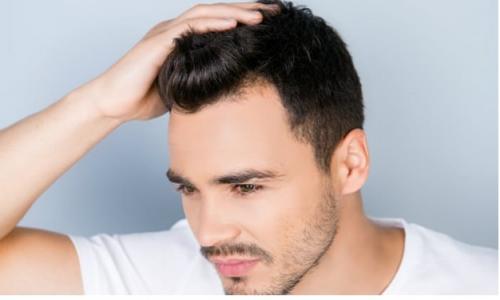Hair Transplant- Post- Surgery Instructions shared by Dr. Audumbar Borgaonkar

Given the scarcity of accurate information on hair transplants, it's no surprise that many people have misconceptions about the process. If you're picturing a patchy and unnatural-looking hairline following a hair restoration operation, think again. Hair transplants have become more precise and effective as medical technology and cosmetic therapy develops.
However, just like your natural hair growth, the transplanted follicles have a shelf life. They're noticeable and long-lasting, although you could need some help with hair upkeep in the future. In this article, Dr Audumbar Borgaonkar who is known for best hair transplant in Navi Mumbai will discuss the hair transplant methods along with post surgery care instructions so that you can ensure a faster recovery along with a better final result.
Hair Transplantation
Hair transplantation is a rather easy and straightforward technique in terms of science. Healthy hair follicles are removed from the recipient's area of the body and implanted in the donor area where hair loss or balding patches are present.
Individuals were initially reluctant to hair transplantation in the 1950s, but things have improved over the decades, and it is now helping people with their look, aesthetics, and self-image.
To gain a better understanding of hair transplantation, we must first grasp the two main types of this procedure:
Follicular Unit Extraction (FUE)
FUE, also known as Follicular Transfer, is a more popular method of hair transplant these days because it does not require extensive incisions on the recipient site. Rather, the cosmetic surgeon uses micro punctures to harvest individual hair follicles, which are then transplanted into the recipient spot.
FUE is much less intrusive and leaves the scalp with little to no scars. However, prior to a FUE operation, the patient may need to shave their entire head to gain better access to the hair follicles and ensure a successful transplant. In comparison to FUT, follicular unit extraction has a faster recovery time and much less post-operative discomfort. In addition, when compared to FUT, FUE harvests follicles from a considerably larger area of the donor zone. FUE is generally thought to be superior to all other techniques.
Follicular Unit Transplantation (FUT)
Follicular Unit Transplantation (FUT) entails removing a strip of hair-bearing skin from the back of the head, separating the hair follicles, and transplanting them to the recipient area. However, because of the lengthier downtime, this is no longer the recommended method.
Instructions for Post-Surgery
After hair transplant surgery, as with any other medical procedure, it's critical to take adequate care of yourself as well as take all of the required precautions. For a few days after a hair transplant, you may most likely experience some soreness in the scalp. In most cases, the doctor will prescribe pain relievers as well as antibiotics and anti-inflammatory medications. It's also crucial to avoid touching the recipient area and to take the drugs prescribed for hair transplant recovery.
The patient must wear bandages for at least a day following the procedure and keep them on overnight to keep the incision line and surgical region clean. To avoid swelling, remove the bandage or head-wrap with scissors the day following the transplant.
A bath and cleaning of the donor area are included in the post hair transplant care two days following the procedure. On this day, the patient must clean the recipient and donor areas by pouring water over them several times. However, it is imperative that you do not use a towel to dry your hair.
The patient must wash their recipient area twice a day after the second day, using a moderate, antibacterial shampoo and conditioner. This is a crucial step in hair transplant care because it ensures that the scalp flakes and crust are eliminated and that infection is avoided.
The following are some additional critical post-hair transplant care instructions:
Alcohol, smoking, and pain relievers should all be avoided.
For at least a couple of weeks after the procedure, do not exercise or engage in any vigorous activity.
Use the oral drugs as directed on a regular basis.
When it comes to sleeping following a hair transplant, you must also take measures. It is recommended that you sleep with your head up to keep the transplant intact and secure. The patient can achieve this by placing numerous pillows or a towel beneath their head. Furthermore, for at least two weeks after the transplant, only the shampoo, conditioner, and lotion advised by the doctor should be utilized. In addition, for three weeks after the treatment, avoid exposure to heat and the sun. Swimming is also not regarded safe during this time.


Comments